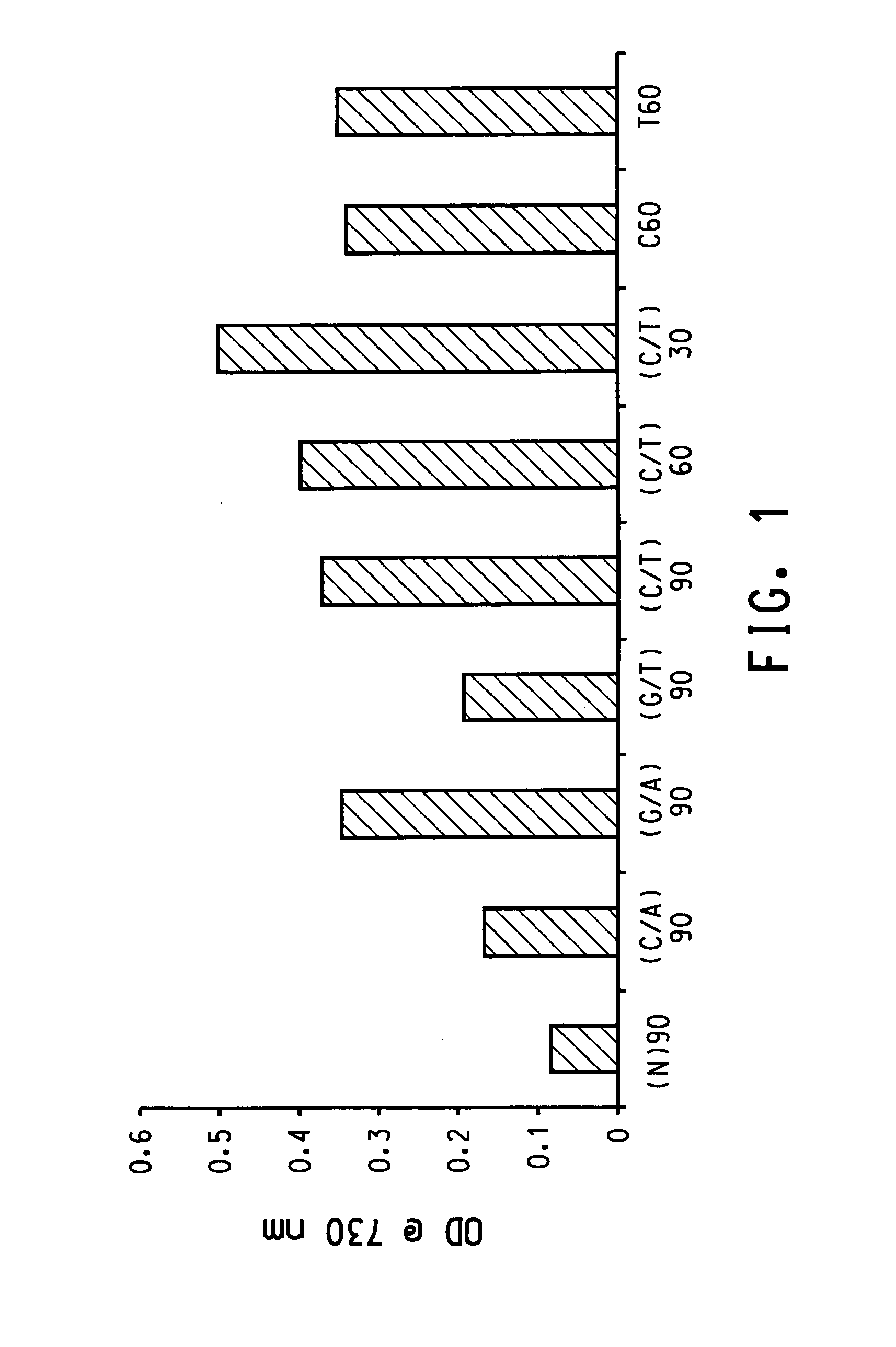Dispersion of carbon nanotubes by nucleic acids
a carbon nanotube and nucleic acid technology, applied in the field of methods, can solve the problems of aggregation, chiral angle, and aggregation state of nanotube samples obtained from various preparation methods, and perturb the electronic structure of tubes by bundling
- Summary
- Abstract
- Description
- Claims
- Application Information
AI Technical Summary
Benefits of technology
Problems solved by technology
Method used
Image
Examples
example 1
Dispersion of Carbon Nanotubes by Single-stranded DNA: Sequence Dependence
[0123]In this experiment, purified single wall carbon nanotubes (HiPCO) were used. Following the procedure described above, the dispersion efficiency of a variety of sequences was examined. The sequences used include:
[0124](N)90: where N stands for a random mix of G, A, T and C, the total length is 90 bases;
[0125](C / A)90: where C / A stands for a random mix of C and A, the total length is 90 bases;
[0126](G / A)90: where G / A stands for a random mix of G and A, the total length is 90 bases;
[0127](G / T)90: where G / T stands for a random mix of G and T, the total length is 90 bases;
[0128](C / T)90, 60, 30: where C / T stands for a random mix of C and T, the total length is 90, 60 and 30 bases, respectively;
[0129]C60: a homopolymer of C with 60 bases long;
[0130]T60: a homopolymer of T with 60 bases long.
[0131]Results from above sequences are shown in FIG. 1. In general, the less G-C and T-A base-pairing interactions in a seq...
example 2
Dispersion of Carbon Nanotubes by Single-stranded DNA: Effect of Sonication
[0132]In this experiment, purified single wall carbon nanotubes (HiPCO) were used. Following the procedure described above, the dispersion efficiency of a particular sequence (C / T)30 as a function of duration of sonication examined. As shown in FIG. 2, the longer the sonication, the more the dispersed CNT. This was found to be true for other sequences tested when sonication time is shorter than 15 minute. Beyond 15 min. duration, there is no further improvement in dispersion efficiency.
example 3
Dispersion Carbon Nanotubes by Single-stranded DNA: Effect of Denaturants
[0133]In this experiment, purified single wall carbon nanotubes (HiPCO) were used. Following the procedure described above, the dispersion efficiency of a particular sequence (C / T)30 in the absence and presence of nucleic acid denaturant formamide. As shown in FIG. 2, denaturant improves the final yield by a factor of 3 for this particular sequence. Other experiments showed that denaturants (such as formamide and urea) in general improve dispersion efficiency by 2 to 3 fold.
PUM
| Property | Measurement | Unit |
|---|---|---|
| diameter | aaaaa | aaaaa |
| aspect ratio | aaaaa | aaaaa |
| aspect ratio | aaaaa | aaaaa |
Abstract
Description
Claims
Application Information
 Login to View More
Login to View More - R&D
- Intellectual Property
- Life Sciences
- Materials
- Tech Scout
- Unparalleled Data Quality
- Higher Quality Content
- 60% Fewer Hallucinations
Browse by: Latest US Patents, China's latest patents, Technical Efficacy Thesaurus, Application Domain, Technology Topic, Popular Technical Reports.
© 2025 PatSnap. All rights reserved.Legal|Privacy policy|Modern Slavery Act Transparency Statement|Sitemap|About US| Contact US: help@patsnap.com



